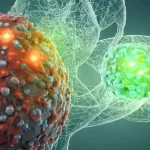Japan Has an Alarming 66% Lower Breast Cancer Rate than the United States – Here is the Key Nutrient You’re Missing
Breast cancer is a prevalent form of cancer among women globally, but the rates of breast cancer can vary significantly between countries. A prime example is the striking disparity between Japan and the United States. In fact, Japan has a breast cancer rate that is 66% lower than that of the United States. So, what factors contribute to this significant difference?
Studies increasingly suggest that diet plays a vital role in breast cancer rates, specifically the consumption of isoflavones. Isoflavones are plant compounds in soy foods that act as phytoestrogens and may offer protective benefits against breast cancer.
The traditional Japanese diet includes a higher intake of isoflavone-rich soy foods compared to the typical Western diet. This dietary distinction could be a central reason why Japanese women have a much lower incidence of breast cancer.
The Role of Iodine and Breast Cancer Risk
Although several factors are involved in minimizing the risk of breast cancer, it is crucial to consider iodine consumption. Iodine is not only vital for thyroid health but also plays a pivotal role in maintaining the health of breast tissue. In fact, the amount of iodine in the breasts is higher than that in the thyroid. Adequate iodine in the breasts is essential for healthy breast function and reducing the risk of breast cancer.
When the body has low levels of iodine, the ovaries produce more estrogen, which can increase the risk of reproductive and breast cancers. Additionally, the lack of iodine can make breast tissue more sensitive to estrogen, making it more prone to breast cancer development.
Research by Dr. Bernard Eskin, a pioneer in iodine research, suggests that iodine can reverse pre-cancerous changes in breast tissue and prevent further tumor growth without harming healthy cells. (read here)
Comparing Japanese and American Iodine Intake
The significant disparity in iodine levels between Japanese and American women further highlights the impact of diet on breast cancer rates. According to the U.S. Dietary Reference Intake, the recommended daily iodine intake is 150 mcg for most individuals and 290 mcg for pregnant and nursing women. In Japan, women consume approximately 25 times more iodine than these recommended amounts.
One primary reason for this difference is the Western diet, which often lacks iodine. Americans obtained iodine from salt in the past, but recent trends of reducing salt intake have resulted in lower iodine levels. Exposure to environmental toxins, such as halides, also contributes to iodine deficiency. These chemicals attach to iodine receptors in the body and prevent proper absorption and utilization of iodine.
Natural Sources of Iodine to Lower Breast Cancer Risk
Since the body cannot produce iodine naturally, incorporating iodine-rich foods into the daily diet can help lower the risk of breast cancer. Here are some excellent natural sources of iodine:
Seafood, such as fish, shrimp, and seaweed
Dairy products, including milk, yogurt, and cheese
Eggs
Cranberries
Prunes
Lima beans
Navy beans
By consciously increasing isoflavone consumption from soy foods and ensuring sufficient iodine intake, individuals can make meaningful dietary changes to reduce their risk of breast cancer. The traditional Japanese diet, which includes significant amounts of isoflavone-containing soy foods like tofu, edamame, and miso, offers a practical example of how diet can impact cancer rates.
Incorporating Japanese Dietary Habits for Lower Cancer Risk
According to NBC News, American women can find valuable insights by looking at Japan’s dietary habits that promote lower breast cancer rates. While genetics and other factors are at play, adopting informed dietary approaches inspired by the Japanese diet may reduce high breast cancer rates in the United States.
The Japanese and American diets exhibit numerous differences that potentially account for the significantly lower cancer incidence in Japan compared to the United States. One such distinction that should be considered is the substantial contrast in cruciferous vegetable consumption. Japanese individuals consume approximately five times the amount of cruciferous vegetables as Americans.
Cruciferous vegetables primarily encompass cabbage family members, including cabbage, broccoli, Brussels sprouts, Chinese cabbage, cauliflower, kale, and watercress. Additionally, certain root vegetables like radishes, parsnips, turnips, rutabaga, and kohlrabi fall under this category.
These cruciferous vegetables play a unique and vital role in promoting good health. They contain natural compounds known as glucosinolates, which undergo breakdown in the body to produce indoles and various other substances that combat cancer development through diverse mechanisms.
Exploring Other Factors Affecting Breast Cancer Rates
While diet, specifically the consumption of isoflavones and iodine, plays a significant role in breast cancer rates, it is essential to consider other factors that contribute to these disparities between Japan and the United States.
Genetics: Genetic factors can influence an individual’s susceptibility to breast cancer. Specific gene mutations, such as BRCA1 and BRCA2, significantly increase the risk of developing breast cancer. Genetic variations can vary between populations, contributing to differences in breast cancer rates. (Read more.)
Hormonal factors: Hormones like estrogen and progesterone can affect breast cancer risk. Factors that increase exposure to these hormones, such as early menarche (onset of menstruation), late menopause, and hormone replacement therapy, can raise the risk of breast cancer. Differences in hormonal levels and their regulation in different populations may contribute to variations in breast cancer rates.
Environmental factors: Exposure to environmental toxins, such as pollutants, radiation, and certain chemicals, can increase the risk of breast cancer. Geographic variations in environmental factors, including air and water quality, may contribute to differences in breast cancer rates between Japan and the United States.
Lifestyle factors: Besides diet, lifestyle habits such as physical activity, alcohol consumption, and smoking can impact breast cancer risk. Higher levels of physical activity and moderate alcohol intake have been associated with reduced breast cancer risk. Cultural differences in lifestyle habits between Japan and the United States may contribute to the disparities in breast cancer rates.
Other Health Benefits of the Japanese Diet
The traditional Japanese diet, emphasizing fresh, high-quality ingredients, has been linked to various health benefits beyond breast cancer prevention. Some of these potential advantages include:
Heart health: The Japanese diet is low in saturated fat and cholesterol and includes heart-healthy foods like fish, seaweed, and soy. Studies suggest that this dietary pattern may contribute to lower rates of cardiovascular disease in Japan.
Weight management: The traditional Japanese diet is generally lower in calories and rich in fiber from vegetables, fruits, and whole grains. These factors, along with smaller portion sizes and mindful eating practices, may contribute to weight maintenance.
Longevity: Japan is known for its high life expectancy, and the traditional Japanese diet is believed to play a significant role. The emphasis on plant-based foods, fish, and minimally processed foods may contribute to longevity and overall health.
Gut health: The Japanese diet typically includes fermented foods like miso, natto, and pickled vegetables. These foods are rich in probiotics, which promote a healthy gut microbiome and have been linked to various health benefits, including improved digestion and a strengthened immune system.
Overcoming Barriers to Adopting the Japanese Diet
While adopting the Japanese diet can offer potential health benefits, incorporating significant changes into one’s eating habits can be challenging. Here are some tips to overcome barriers and incorporate Japanese dietary habits for lower breast cancer risk:
Start with small changes: Begin by incorporating one or two aspects of the Japanese diet at a time. For example, swap out a Western dessert for a serving of fruit or include a serving of seaweed in your meal.
Experiment with new recipes: Explore Japanese cuisine using different recipes. Incorporating flavors and ingredients from the Japanese diet can make healthy eating more enjoyable and sustainable.
Get creative with soy foods: Incorporate more soy foods into your diet by experimenting with tofu, tempeh, edamame, or soy milk. These foods are versatile and can be incorporated into a variety of dishes.
Prioritize whole foods: Emphasize fresh, whole foods in your meals. Aim to include a variety of vegetables, fruits, whole grains, lean proteins (such as fish), and healthy fats (like avocado or olive oil).
Find Japanese-inspired alternatives: Look for Japanese-inspired options to Western favorites. For example, try making noodles out of zucchini instead of traditional pasta or explore the variety of Japanese noodles available, like soba or udon.
Remember, it’s essential to consult with a healthcare professional or registered dietitian before making significant dietary changes to ensure they align with your health needs.
Incorporating a Holistic Approach to Breast Cancer Prevention
While diet plays a vital role in breast cancer prevention, adopting a holistic approach to reduce the risk is essential. Here are some additional steps individuals can take:
Regular physical activity: Engage in regular exercise to maintain a healthy weight and reduce breast cancer risk. Aim for a combination of cardiovascular workouts, strength training, and flexibility exercises.
Limit alcohol consumption: Excessive alcohol intake has been linked to an increased risk of breast cancer. Limit alcohol consumption to moderate levels, defined as no more than one alcoholic drink per day for women.
Avoid smoking and secondhand smoke: Smoking has been associated with various cancers, including breast cancer. Quitting smoking and avoiding exposure to secondhand smoke can significantly reduce the risk.
Regular breast self-exams and screenings: Perform monthly breast self-exams and follow recommended mammograms and other breast cancer screening guidelines. Early detection is crucial for successful treatment.
Stress management: Chronic stress, including breast cancer risk, can impact health. Adopt stress management techniques, such as meditation, yoga, or engaging in hobbies that promote relaxation.
Individuals can optimize their efforts toward breast cancer prevention by adopting a comprehensive approach that includes a healthy diet, regular exercise, and reducing exposure to risk factors.
A Final Word
The significant disparity in breast cancer rates between Japan and the United States highlights the impact of diet on cancer risk. The Japanese diet, emphasizing isoflavone-rich soy foods and adequate iodine intake, offers valuable insights and potential strategies for reducing breast cancer rates.
While diet alone cannot guarantee breast cancer prevention, incorporating elements of the Japanese diet, such as plant-based foods, lean proteins, and whole grains, can contribute to overall health and help reduce the risk. Additionally, lifestyle factors, genetics, and environmental influences play a role, and adopting a holistic approach to breast cancer prevention is essential.
By being proactive and making informed choices about our diet and lifestyle, we can take the necessary steps to reduce the risk of breast cancer and promote overall well-being.












